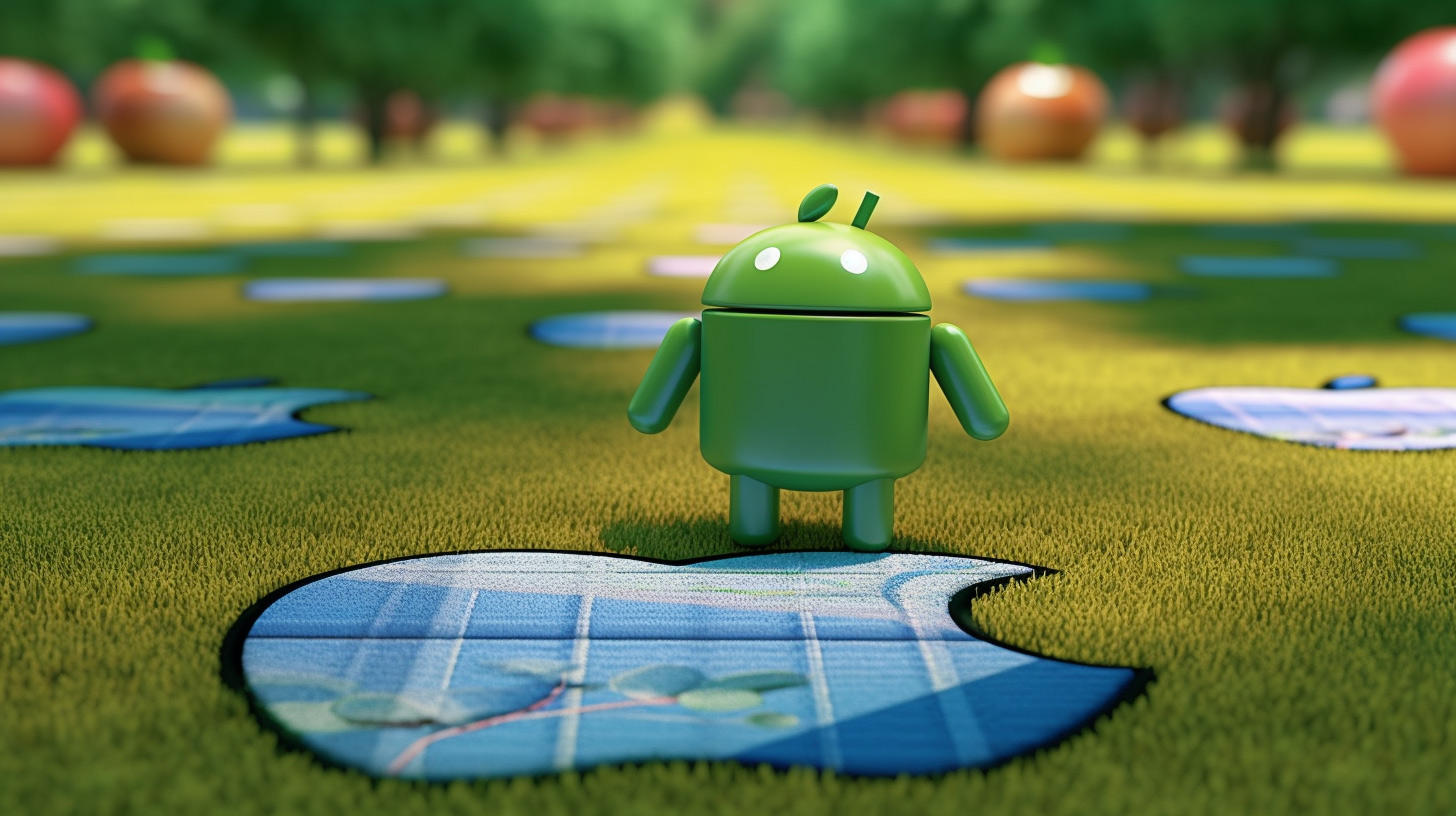Mobile operating systems have become an integral part of our daily lives, powering the smartphones and tablets that we rely on for communication, entertainment, and productivity. In this in-depth article, we embark on a journey through time to explore the first mobile operating system and its evolution, tracing the technological advancements that have shaped the way we interact with our mobile devices.
Introduction to Mobile Operating Systems
Mobile operating systems, often referred to as mobile OS, are the software platforms that manage and operate mobile devices. They serve as the interface between the hardware components of a mobile device and the applications that run on it, facilitating user interaction and device functionality.
The Genesis: First Mobile Operating System
The history of mobile operating systems traces its roots back to the early 1990s when the concept of a “smartphone” was in its infancy. IBM’s Simon Personal Communicator, released in 1992, is often regarded as the first commercially available smartphone. It ran on the GEOS operating system, a graphical user interface (GUI) based system that provided basic functions such as phonebook, calendar, and email.
The Rise of Palm OS and Windows CE
In the late 1990s and early 2000s, mobile operating systems saw significant advancements. Palm OS, developed by Palm, Inc., gained popularity for its simplicity and efficiency. It featured a stylus-based interface and became the preferred choice for personal digital assistants (PDAs) like the Palm Pilot.
On the other hand, Windows CE, a mobile operating system developed by Microsoft, made its mark in the mobile computing landscape. It was versatile, capable of running on various devices, including early smartphones and handheld PCs. Windows CE laid the groundwork for Microsoft’s future mobile endeavors.
The Emergence of Symbian and BlackBerry
The early 2000s also witnessed the rise of Symbian OS, which powered a wide range of mobile devices, including Nokia’s iconic phones. Symbian offered a customizable and extensible platform for mobile manufacturers and developers, contributing to its widespread adoption.
In the corporate world, BlackBerry OS gained prominence for its secure messaging and email capabilities. BlackBerry devices, with their physical keyboards, became the standard for professionals who needed reliable communication on the go.
The Game-Changer: iOS and Android
The mobile landscape underwent a seismic shift with the introduction of Apple’s iOS in 2007, accompanied by the launch of the iPhone. iOS brought touch-based navigation, the App Store, and a sleek user interface to the masses. It revolutionized the smartphone industry and set the standard for modern mobile operating systems.
Around the same time, Android entered the scene. Developed by Android, Inc. and later acquired by Google, Android offered an open-source platform that quickly gained traction. Its flexibility, diverse hardware support, and extensive app ecosystem made it a formidable competitor to iOS.
Continual Innovation and Diversity
Since the arrival of iOS and Android, the mobile operating system landscape has continued to evolve. Numerous versions and updates have been released, introducing features such as voice assistants, augmented reality, and enhanced security measures.
Moreover, other mobile operating systems like Windows Phone and Firefox OS made their attempts to challenge the iOS-Android duopoly, albeit with limited success.
When it comes to choosing a mobile platform for development, the two giants in the market are Android and IOS. Both operating systems offer unique features and have a significant user base. Deciding which one to work with can be a challenging task. In this article, we will compare Android and IOS based on various factors to help you make an informed decision. So, let’s dive in and explore the differences between the two!
User Base and Market Share:
One crucial factor to consider when choosing between Android and IOS is the user base and market share. Android dominates the global market with a larger user base, primarily due to its availability on a wide range of devices from different manufacturers. On the other hand, IOS has a strong foothold in developed countries and is known for its loyal user base. The decision on which platform to work with should consider your target audience and their preferences.
Development Tools and Languages:
Another aspect to consider is the development tools and languages offered by each platform. Android development is primarily done using Java or Kotlin programming languages, along with the Android Studio IDE. This combination provides a robust and feature-rich development environment. In contrast, IOS development is done using Swift or Objective-C programming languages, and Xcode is the official IDE for IOS development. Both platforms offer extensive documentation and resources for developers to get started.
App Store Ecosystem:
The app store ecosystem plays a vital role in the success of your app. Android has the Google Play Store, which boasts a vast number of apps and a larger user base. It offers relatively easier app submission and a less stringent review process. On the other hand, IOS has the Apple App Store, which is known for its strict review guidelines and curated app collection. Although the review process can be more rigorous, the Apple App Store often generates higher revenue for developers due to the willingness of IOS users to pay for apps.
Fragmentation vs. Uniformity:
Android is known for its fragmentation, as the operating system runs on various devices with different screen sizes, resolutions, and hardware capabilities. This can make testing and ensuring app compatibility across different devices a more complex task. In contrast, iOS offers a uniform hardware and software ecosystem, as Apple controls both the hardware and software aspects. This uniformity simplifies the testing process and ensures a consistent user experience across all IOS devices.
Customizability and Flexibility:
Android provides a high level of customizability and flexibility, allowing developers to create innovative apps with unique features. It allows for deep integration with the operating system and provides more freedom for customization. On the other hand, iOS follows a more controlled approach, limiting certain customization options for developers. This approach ensures a consistent and secure user experience but may restrict the level of creativity in app development.
Monetization Opportunities:
Monetization is an essential consideration when developing apps. Android apps often rely on advertisements and in-app purchases for revenue generation, as the majority of Android users are accustomed to free apps. However, with a larger user base, there is potential for higher ad revenue. In contrast, IOS users are more willing to pay for apps upfront, leading to higher app purchase revenue. Additionally, IOS users tend to spend more on in-app purchases, making it an attractive platform for generating revenue.
Security and Privacy:
When it comes to security and privacy, IOS has a reputation for being more secure. Apple’s strict control over its hardware and software ecosystem, along with its emphasis on privacy, has earned the trust of many users. Android, being an open-source platform, is more susceptible to malware and security vulnerabilities. However, Google has made significant strides in enhancing Android’s security features in recent years.
App Ecosystem:
The availability and diversity of apps can significantly impact your smartphone experience. Android boasts a vast app ecosystem, with millions of apps available on the Google Play Store. This extensive selection caters to a wide range of interests and needs. However, iOS, despite having a smaller app store, is known for its high-quality and curated apps. If you value quantity and variety, Android may be the way to go, but if you prioritize app quality and security, iOS has the edge.
Integration with Other Devices:
Seamless integration with other devices, such as laptops, tablets, and smartwatches, can enhance your overall digital experience. Android offers excellent compatibility with a wide range of devices, allowing for easy synchronization and sharing of data. However, if you already own Apple products like a MacBook or an iPad, choosing iOS would provide a more integrated ecosystem, enabling seamless connectivity and synchronization across your Apple devices.
Which one is more popular?
Both Android and iOS have a significant presence in the smartphone market, but their popularity varies depending on the region and demographic. Overall, Android has a larger market share globally compared to iOS. According to StatCounter, as of May 2021, Android held approximately 72.54% of the global mobile operating system market share, while iOS accounted for around 26.39%.
The popularity of Android can be attributed to several factors, including its wide range of device options, affordability across various price points, and its open-source nature, which allows for customization and flexibility. Android devices are manufactured by numerous companies, offering consumers a diverse selection to choose from.
On the other hand, iOS, exclusive to Apple devices, maintains a strong presence in certain markets, particularly in North America and Western Europe. Apple’s devices, such as iPhones, iPads, and MacBooks, have a reputation for their premium build quality, seamless integration, and user-friendly interface. iOS users often appreciate the ecosystem’s consistency and the perceived higher level of security.
It’s important to note that while Android has a larger market share, iOS tends to have a higher share of app revenue, as iOS users typically spend more on apps and in-app purchases. This is due to factors such as the demographics of iOS users, the strict app review process that ensures app quality, and the general perception of iOS as a platform for higher-end users.
Ultimately, the choice between Android and iOS depends on individual preferences, needs, and priorities, and both operating systems have their own dedicated user bases.
Conclusion:
In the battle between Android and IOS, there is no definitive answer as to which one is the better choice. It ultimately depends on your specific requirements, target audience, and resources. Android offers a larger user base, customization options, and potential for ad revenue, while iOS provides a loyal user base, a controlled ecosystem, and higher app purchase revenue. Consider these factors carefully, evaluate your goals, and choose the platform that aligns best with your needs. Happy app development!
FAQ
Which operating system is more customizable, Android or iOS?
Android
Which operating system has a larger market share, Android or iOS?
Android
Which operating system is more secure, Android or iOS?
iOS
Which operating system offers a more integrated ecosystem, Android or iOS?
iOS


1 Comment